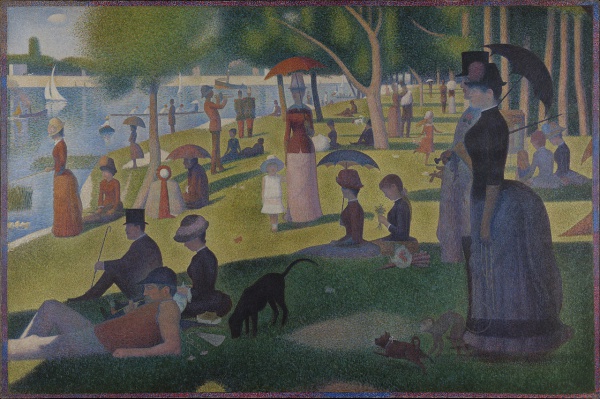Facts About A Sunday Afternoon on the Island of La Grande Jatte
"A Sunday Afternoon on the Island of La Grande Jatte" is one of Georges Seurat's most renowned paintings, created between 1884 and 1886. This masterpiece exemplifies Seurat's pointillist technique, portraying Parisians enjoying a leisurely day in a park by the River Seine. Seurat's meticulous method involved extensive preparatory work, emphasizing color, light, and form. He applied color theories from Chevreul and Rood, using tiny dots and brushstrokes to achieve a remarkable optical blending effect.
When the painting was first exhibited in 1886, it established Seurat as a leading figure in the Neo-Impressionism movement. The scene captures a variety of people engaged in different activities on the island, with Seurat's masterful use of shadows and intricate details inviting viewers to explore its deeper meaning. Over the years, scholars have analyzed the painting for its social and political implications, offering insights into French society and modernity at the time.
Seurat's distinctive color palette and technique evolved throughout the creation of this work, integrating advanced color theories. The painting's acquisition by the Art Institute of Chicago in 1924 further cemented its legacy. It has since appeared in popular culture, including films, magazines, and various artistic reinterpretations. Seurat's masterpiece continues to captivate audiences with its innovative style and enduring impact on the art world.

 Mexico
Mexico